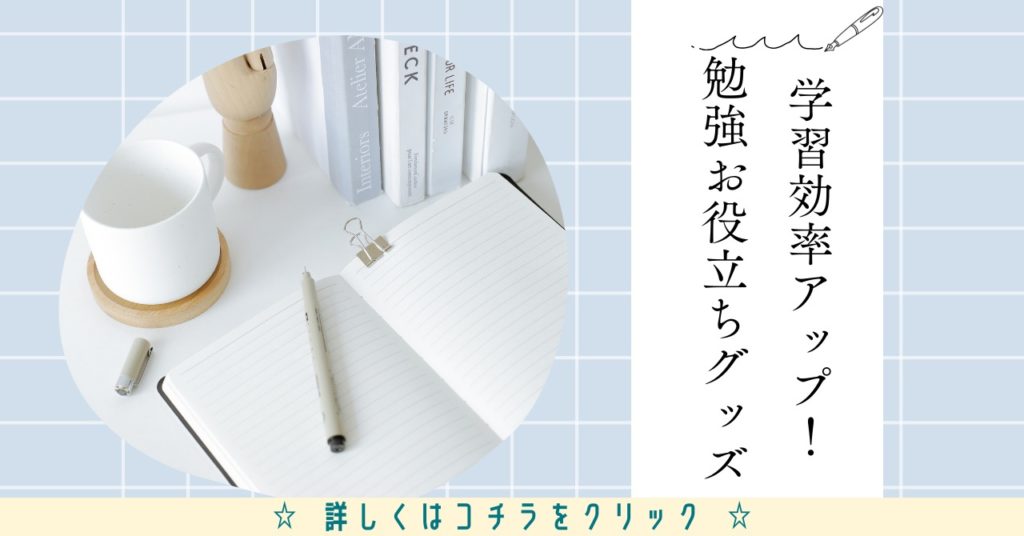啓林館 高1LANDMARK Lesson5 Part3の本文の日本語訳と重要箇所の解説です。
Lesson5-1, 5-2, 5-4の解説はこちらからご覧ください。
>高1LANDMARK Lesson5 Part1 本文和訳
>高1LANDMARK Lesson5 Part2 本文和訳
>高1LANDMARK Lesson5 Part4 本文和訳
- LANDMARK Lesson5 Part3 本文と日本語訳
- LANDMARK Lesson5 Part3 重要事項の解説
- Research provides some interesting evidence to support the positive effects of facility dogs.
- In an experiment conducted in Hungary, dogs managed to read human emotions in the same way as human do.
- Another study in Japan also found a surprising fact.
- When a dog and its owner looked intently at each other, a hormone called oxytocin was produced in the owner’s body.
- This is the substance that helps reduce pain and anxiety.
- This may be one of the reasons why patients feel relieved when they look into dogs’ eyes.
- There is a story that shows how Bailey helped children.
- Many children who had operations wanted Bailey to go to the operating room with them.
- They were scared of the surgery, but with Bailey, they felt calm and relaxed.
- This mental state was important for children receiving a particular treatment because it reduced the amount of medication they needed.
- Bailey not only made children feel relaxed, but also enhanced the effects of their treatment.
- LANDMARK Lesson5 Part3 まとめ
LANDMARK Lesson5 Part3 本文と日本語訳
Q1. What is oxytocin?
「オキシトシンとは何ですか?」
Q2. Why did many children want Bailey to go to the operating room with them?
「なぜ多くの子どもたちはベイリーに一緒に手術室に入ってほしいと思ったのですか?」
Research provides some interesting evidence to support the positive effects of facility dogs.
「調査によってファシリティードッグの有益な効果を支持する面白い証拠がいくつか提供されています。」
In an experiment conducted in Hungary, dogs managed to read human emotions in the same way as human do.
「ハンガリーで行われた実験では,人間が行うのと同じ方法で犬が人間の感情を何とか読み取ろうとしました。」
Another study in Japan also found a surprising fact.
「日本の他の研究も驚くべき事実を発見しました。」
When a dog and its owner looked intently at each other, a hormone called oxytocin was produced in the owner’s body.
「犬と飼い主がお互いを夢中になって見ていると,オキシトシンと呼ばれるホルモンが飼い主の体から生成されました。」
This is the substance that helps reduce pain and anxiety.
「これは痛みと不安を減らすのに役立つ物質です。」
This may be one of the reasons why patients feel relieved when they look into dogs’ eyes.
「これは,患者が犬の目を見ると安心するという理由の1つになるかもしれません。」
There is a story that shows how Bailey helped children.
「ベイリーがどうやって子どもたちを助けたのかを示す物語があります。」
Many children who had operations wanted Bailey to go to the operating room with them.
「手術を受けた多くの子どもたちはベイリーに一緒に手術室に行ってほしいと思っていました。」
They were scared of the surgery, but with Bailey, they felt calm and relaxed.
「彼らは手術を怖がっていましたが,ベイリーと一緒だと,落ち着いてリラックスしていました。」
This mental state was important for children receiving a particular treatment because it reduced the amount of medication they needed.
「この精神状態は子どもたちが必要とする投薬の量を減らすので,特定の治療を受ける子どもたちにとって重要でした。」
Bailey not only made children feel relaxed, but also enhanced the effects of their treatment.
「ベイリーは子どもたちをリラックスさせるだけでなく,治療の効果も高めました。」

LANDMARK Lesson5 Part3 重要事項の解説
Research provides some interesting evidence to support the positive effects of facility dogs.
“provide”は「を提供する」という動詞で,“research”は「調査」,“evidence”は「証拠」,“effect”は「効果,影響」といった名詞です。
“some”は「いくつかの」,“interesting”は「面白い,興味深い」,”positive”は「好意的な,有益な」といった形容詞になります。
“of”は前置詞で,”A of B”の形で「BのA」というように後ろから前に訳します。
“support”は「を支持する,支える」という動詞で,“to support”は「不定詞の形容詞的用法」となり,直前の“some interesting evidence”を修飾していますね。
また,この文は直訳すると「調査は~を提供します。」となりますが,主語が「人以外」のときは「主語によって~される」と受け身のように訳すと綺麗な日本語になりやすいです。
In an experiment conducted in Hungary, dogs managed to read human emotions in the same way as human do.
“experiment”は「実験」,“human”は「人間」,“emotion”は「感情」,“way”は「道,方法」という名詞になります。
“conduct”は「を行う,指揮する」という動詞で,ここでは「過去分詞」になって,“conducted in Hungary”が直前の“an experiment”を修飾しています。
“manage”は「をやりくりする,扱う」という動詞で,“manage to 動詞の原形”で「何とか~する」という重要表現になります。
“same”は「同じ」という形容詞で,“as”は「関係代名詞」として,“as human do”が先行詞“the same way”を修飾しています。
先行詞に”the same”,”so”, “as”, “such”が付くときは,”as”を関係代名詞として使います。
“do”は「代動詞」といって,直前に出てきた動詞と同じ意味になります。今回は“read”を指していますね。
Another study in Japan also found a surprising fact.
“another”は「別の,他の」という形容詞で,“study”は「研究」という名詞になります。
“also”は「また,さらに」といった副詞で,付け加える役割があります。色々な文で使うので必ず覚えましょう!
“found”は“find(を見つける)”の過去形で,“surprising”は「驚くべき」という形容詞,“fact”は「事実」という名詞ですね。
When a dog and its owner looked intently at each other, a hormone called oxytocin was produced in the owner’s body.
この文は「接続詞when」が使われていますね。
“owner”は「所有者,飼い主」,“hormone”は「ホルモン」,“oxytocin”は「オキシトシン」という名詞です。
“intently”は「熱心に,夢中になって」という副詞で,“each other”は「お互い」という重要表現ですね。
“called”は「過去分詞」で,“called oxytocin”が直前の“a hormone”を修飾しています。
“produce”は「を生産する」という動詞で,この文は「受動態」になっています。
This is the substance that helps reduce pain and anxiety.
“substance”は「物質」,“pain”は「痛み」,“anxiety”は「不安,心配」という名詞です。
“that”は「主格の関係代名詞」で,“that helps reduce pain and anxiety”が先行詞“the substance”を修飾しています。
“help 動詞の原形”は「~するのを手伝う・助ける」という意味で,“reduce”は「を減らす」という動詞です。
This may be one of the reasons why patients feel relieved when they look into dogs’ eyes.
“may”は「~かもしれない」という推量の助動詞です。
“reason”は「理由」という名詞で,“why”は“reason”を修飾する「関係副詞」になります。
“why patients feel relieved when they look into dogs’ eyes”が先行詞“the reasons”を修飾していますね。
“patient”は「患者」という名詞で,“feel”は「を感じる」という動詞,“relieved”は「安心した」という形容詞,“look into~”は「~の中を見る」という意味です。
また,「接続詞when」も使われていますね。“they”は“patients”を指しています。
There is a story that shows how Bailey helped children.
この文では「there構文」が使われていますね。
“that”は「主格の関係代名詞」で,“that shows how Bailey helped children”が先行詞“a story”を修飾しています。
“show”は「見せる,示す」という動詞ですね。
また,“how Bailey helped children”は「間接疑問文」になっています。
Many children who had operations wanted Bailey to go to the operating room with them.
“who”は「主格の関係代名詞」で,“who had operations”が先行詞“Many children”を修飾しています。
“operation”は「手術」という名詞です。
“want 人 to 動詞の原形”は「人に~してほしい」という重要表現ですね。
“them”は“Many children”を指しています。つまり「多くの子どもたちは,自分たちと一緒にベイリーに手術室に行ってほしかった」となります。
They were scared of the surgery, but with Bailey, they felt calm and relaxed.
“be scared of~”は「~を怖がる」といった表現になります。“surgery”は「手術」という名詞です。
“they”は“Many children”を指していますね。
“felt”は“feel(を感じる)”の過去形で,“calm”は「落ち着いた」,“relaxed”は「リラックスした,くつろいだ」という形容詞になります。
This mental state was important for children receiving a particular treatment because it reduced the amount of medication they needed.
“mental”は「心の,精神の」という形容詞で,“state”は「状態,地位」という名詞です。
“receive”は「を受け取る,受ける」という動詞で,ここでは「現在分詞」になって,“receiving a particular treatment”が直前の“children”を修飾しています。
“particular”は「特定の」という形容詞で,“treatment”は「治療」という名詞になります。
また,ここでは「接続詞because」も使われていますね。
“it”は“This mental state”を指しています。
“the amount of~”は「~の量」という表現で,“medication”は「薬物,投薬」という名詞になります。
さらに,最後には「目的格の関係代名詞」“that/which”が省略されていて,“they needed”が先行詞“medication”を修飾しています。
“they”は“children”を指していて,“need”は「を必要とする」という動詞です。
Bailey not only made children feel relaxed, but also enhanced the effects of their treatment.
“not only A but also B”は「AだけでなくBもまた」という重要表現です。
“enhance”は「を高める」という動詞になります。
LANDMARK Lesson5 Part3 まとめ
以上がLANDMARK Lesson5 Part3の日本語訳となります。
「関係詞」「分詞」などの作り方をしっかり確認しておきましょう!
>高1LANDMARK Lesson5 Part1 本文和訳
>高1LANDMARK Lesson5 Part2 本文和訳
>高1LANDMARK Lesson5 Part4 本文和訳
何か分からない点や他に解説してほしい点があれば,お気軽にコメントしてください!



コメント